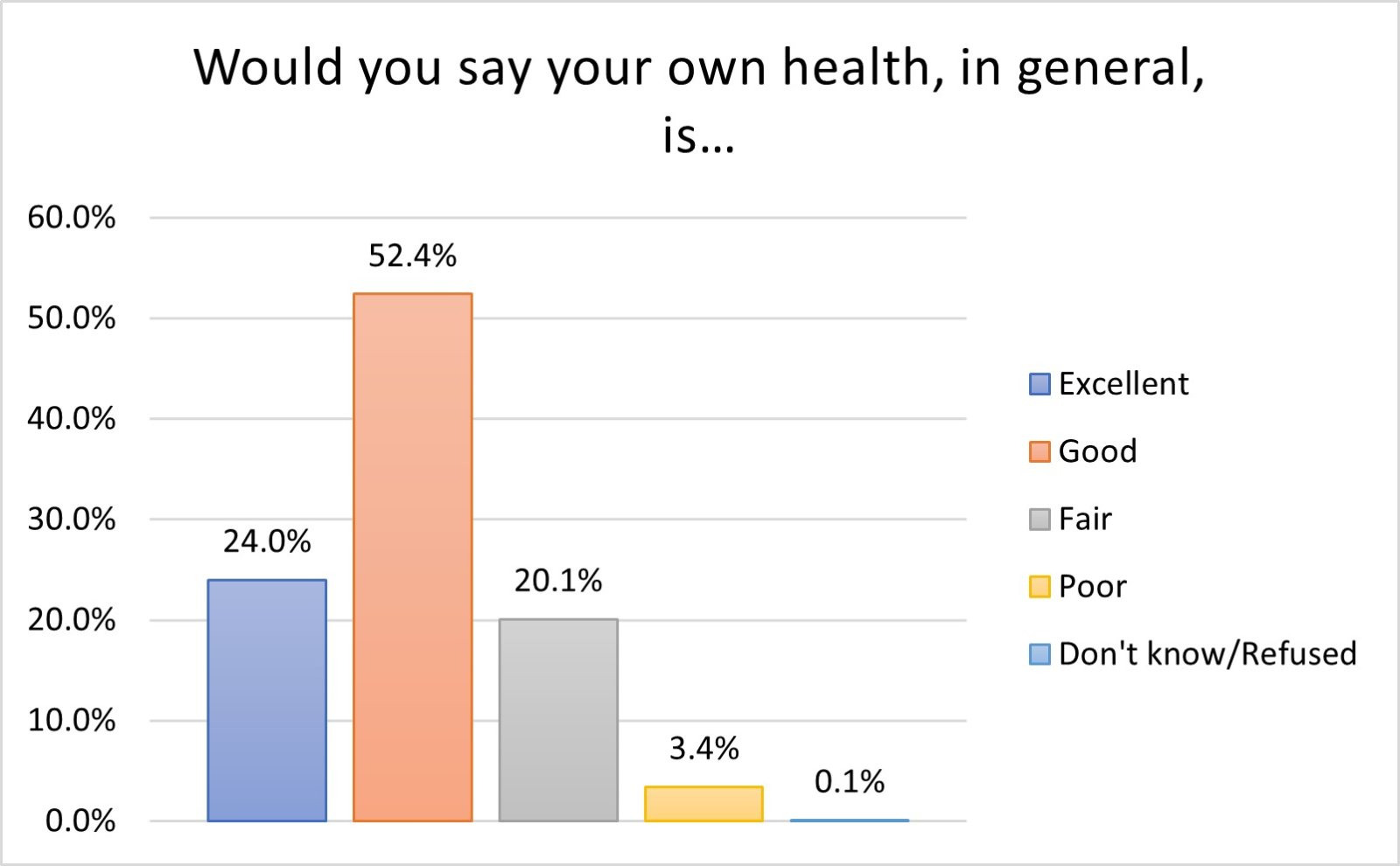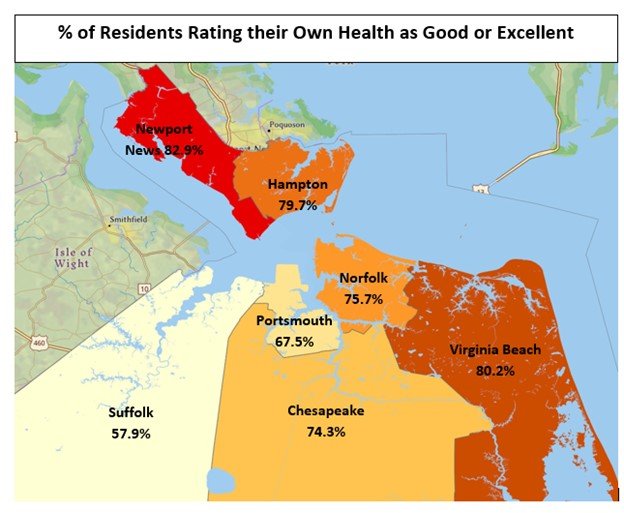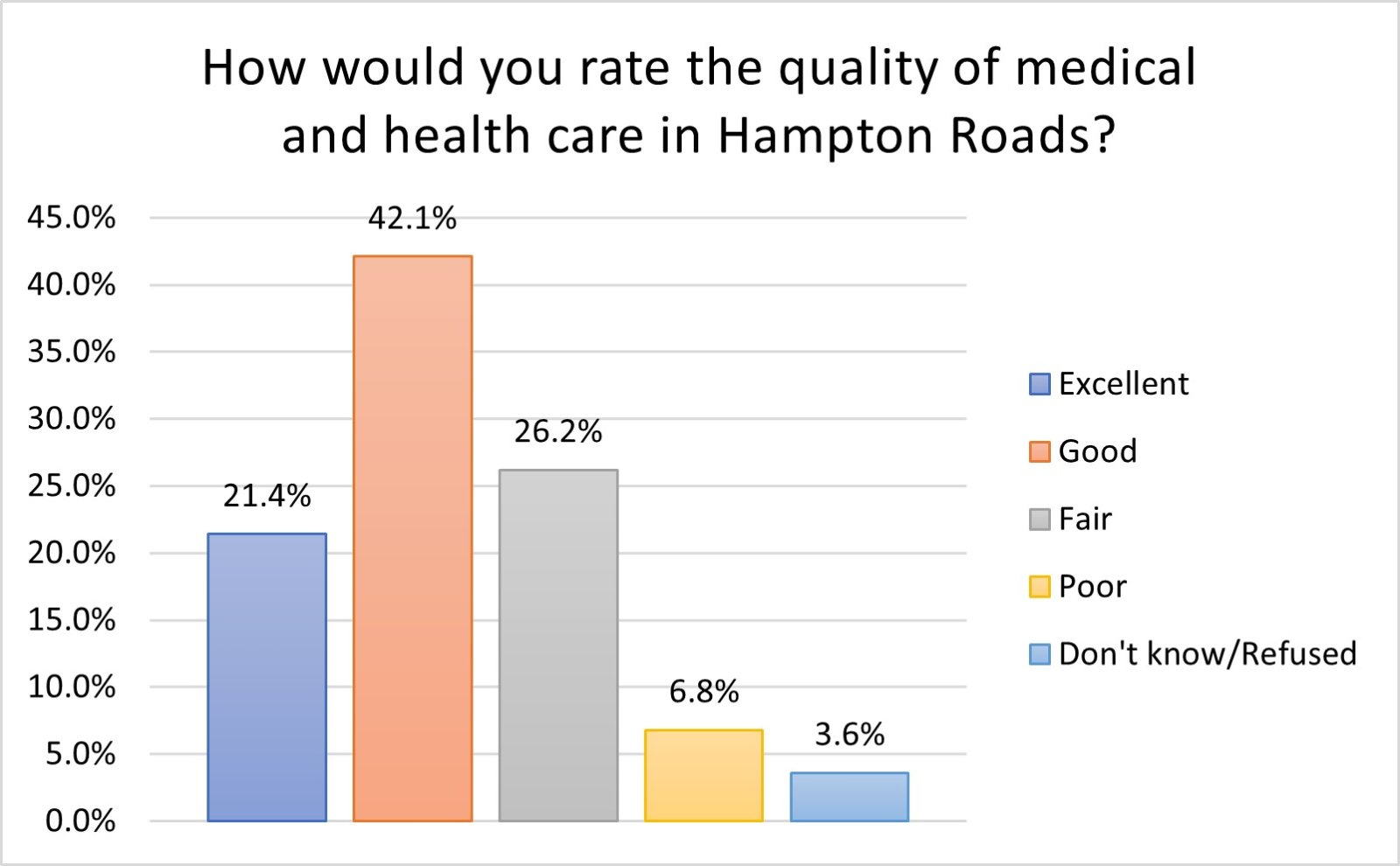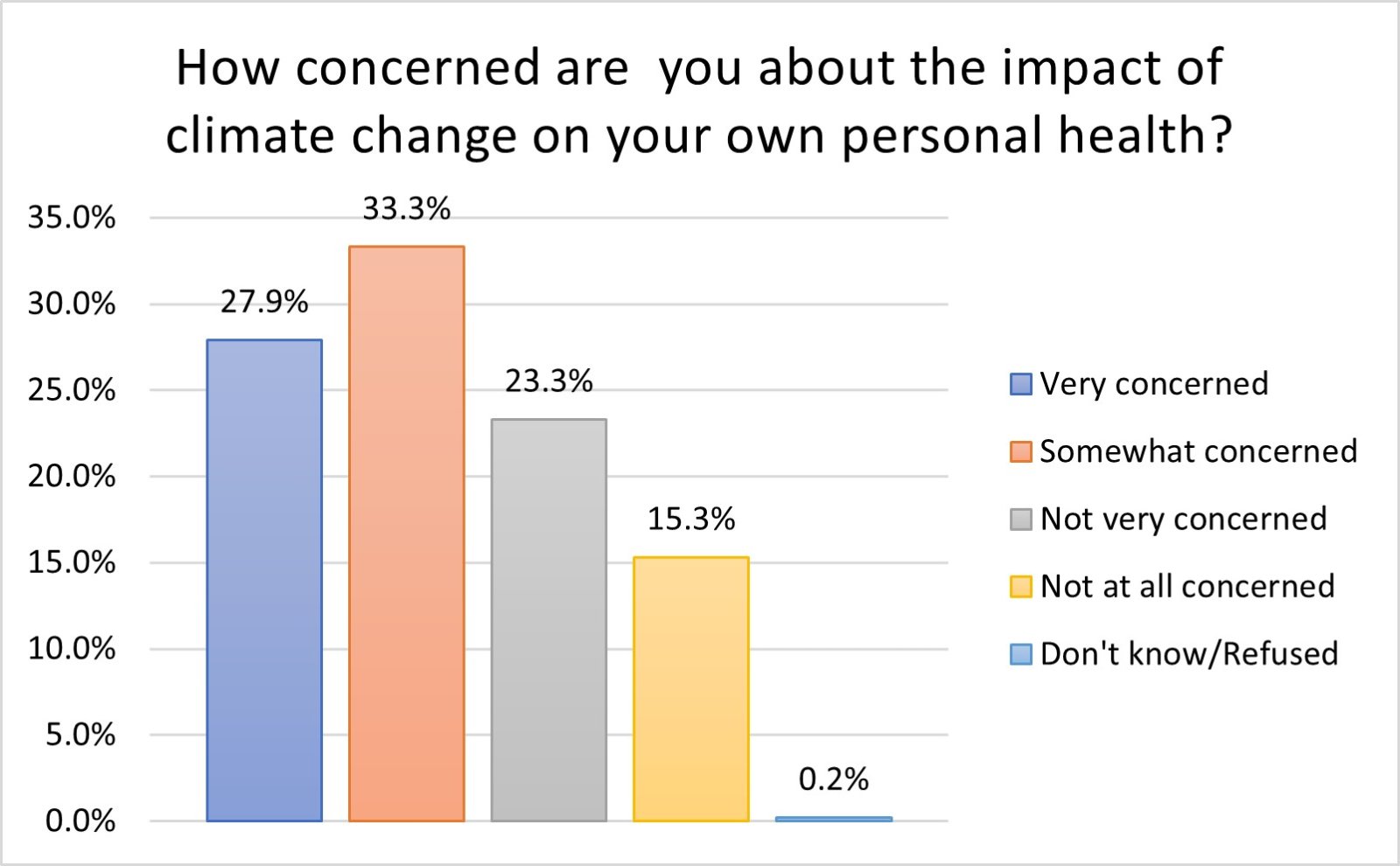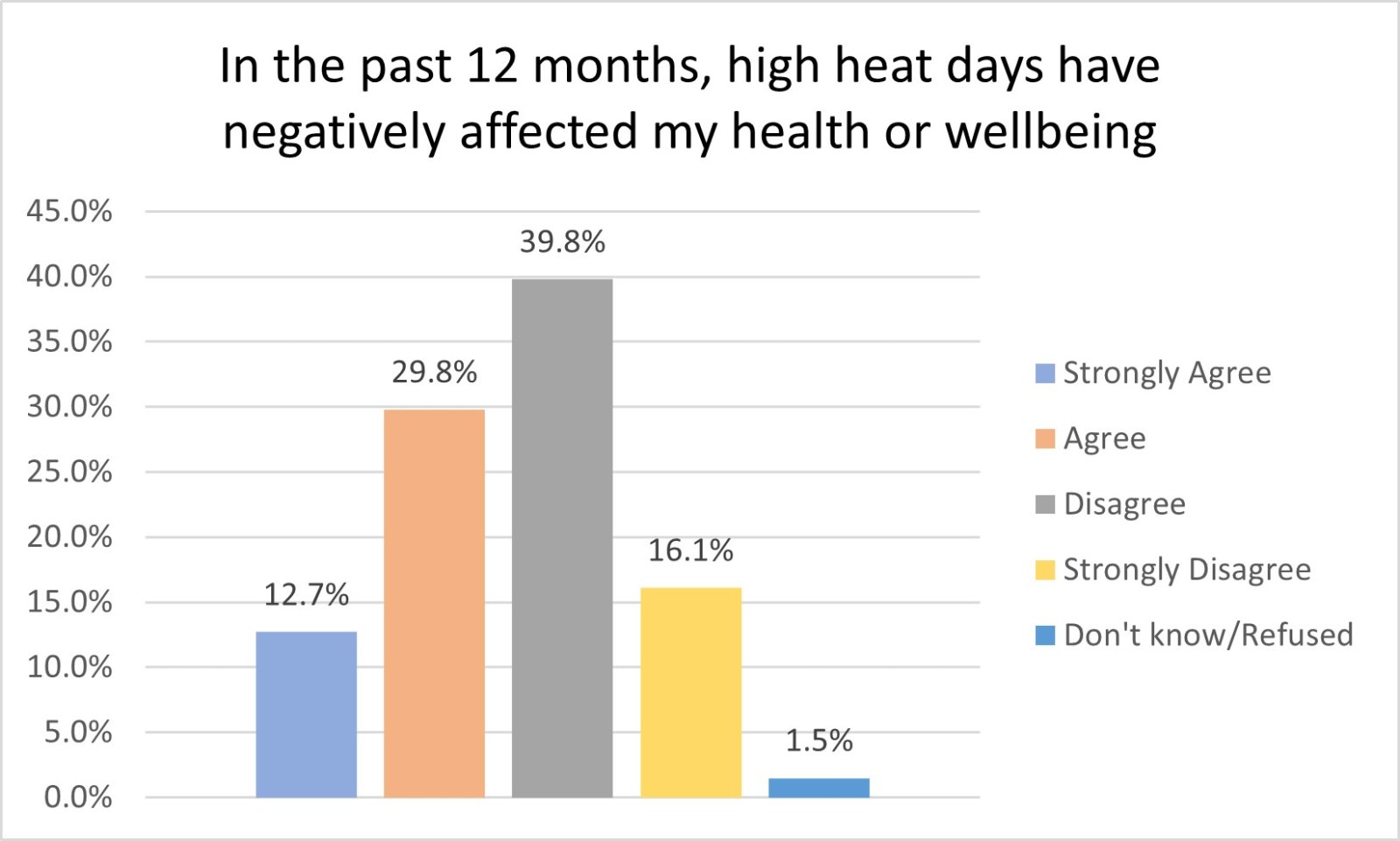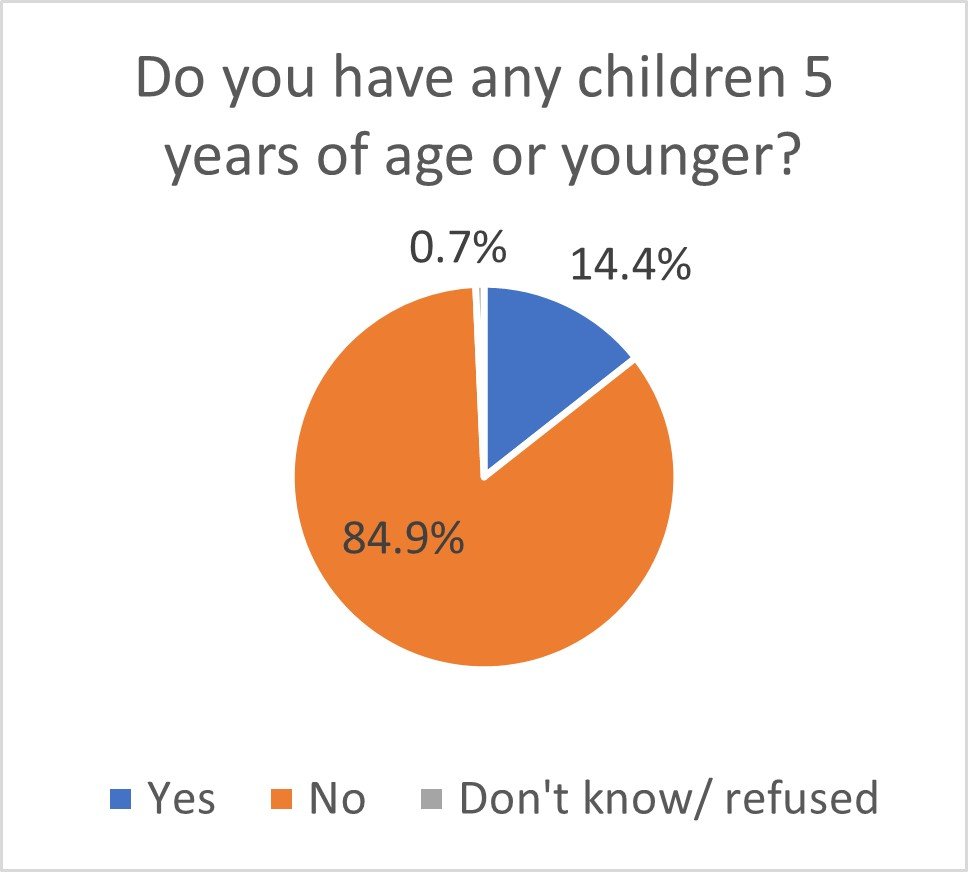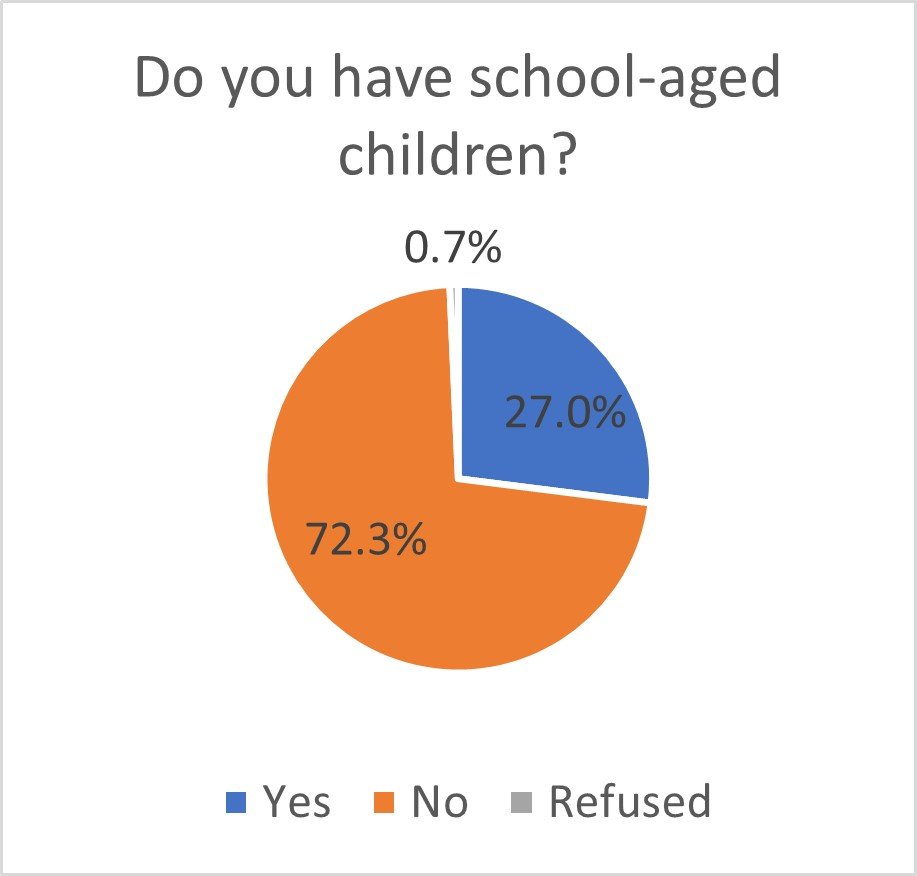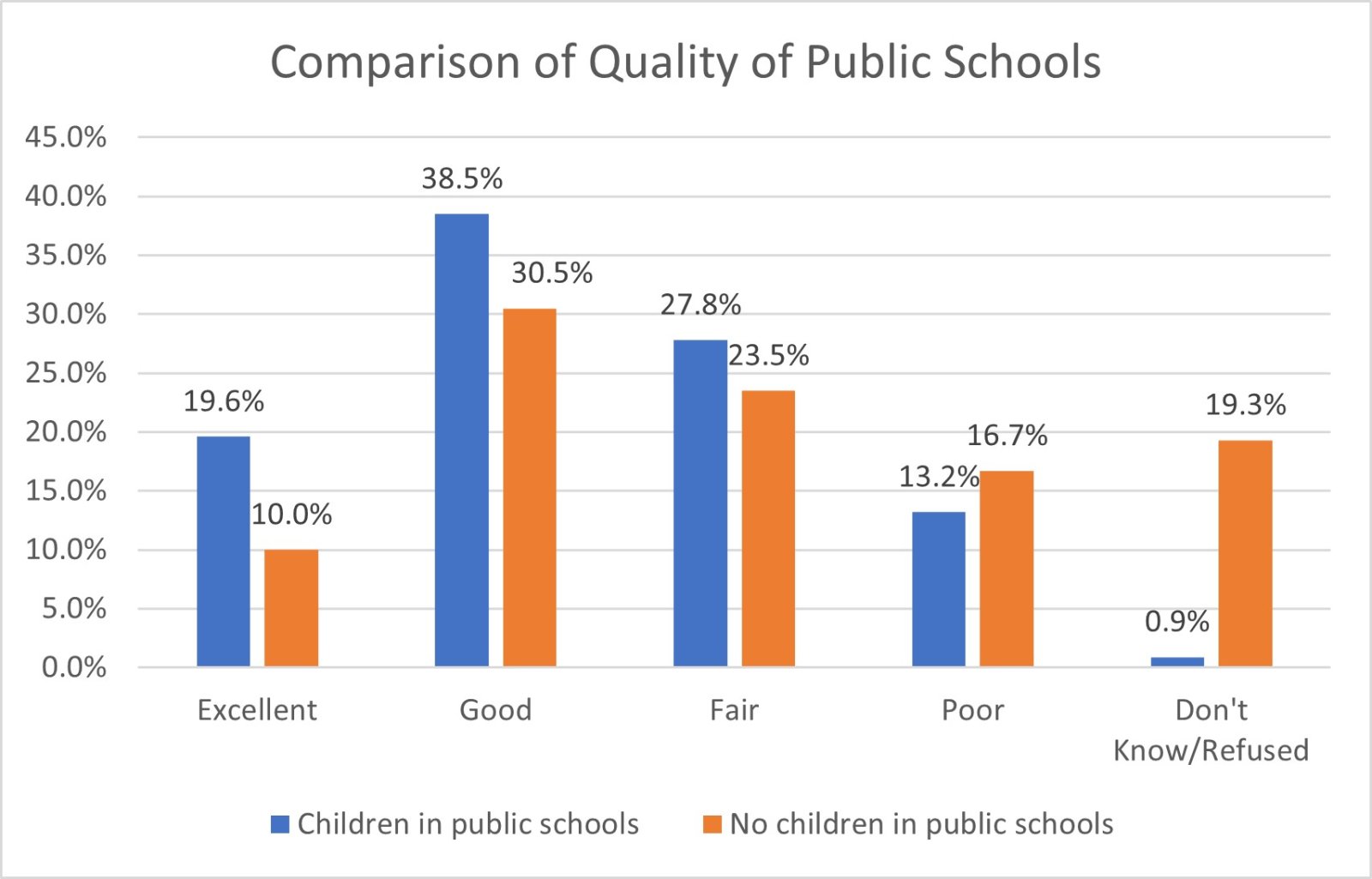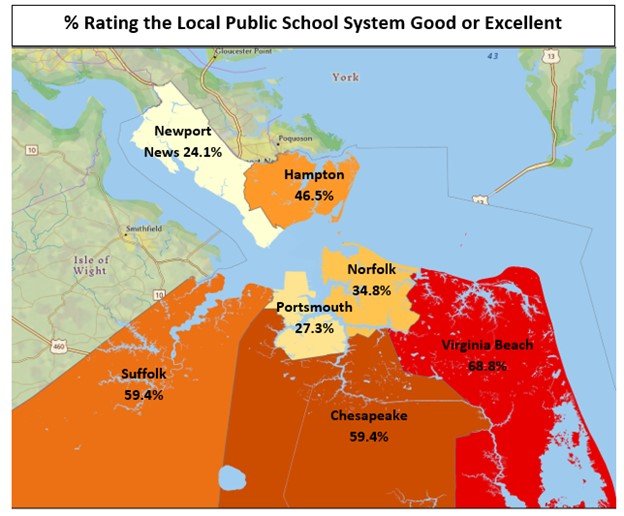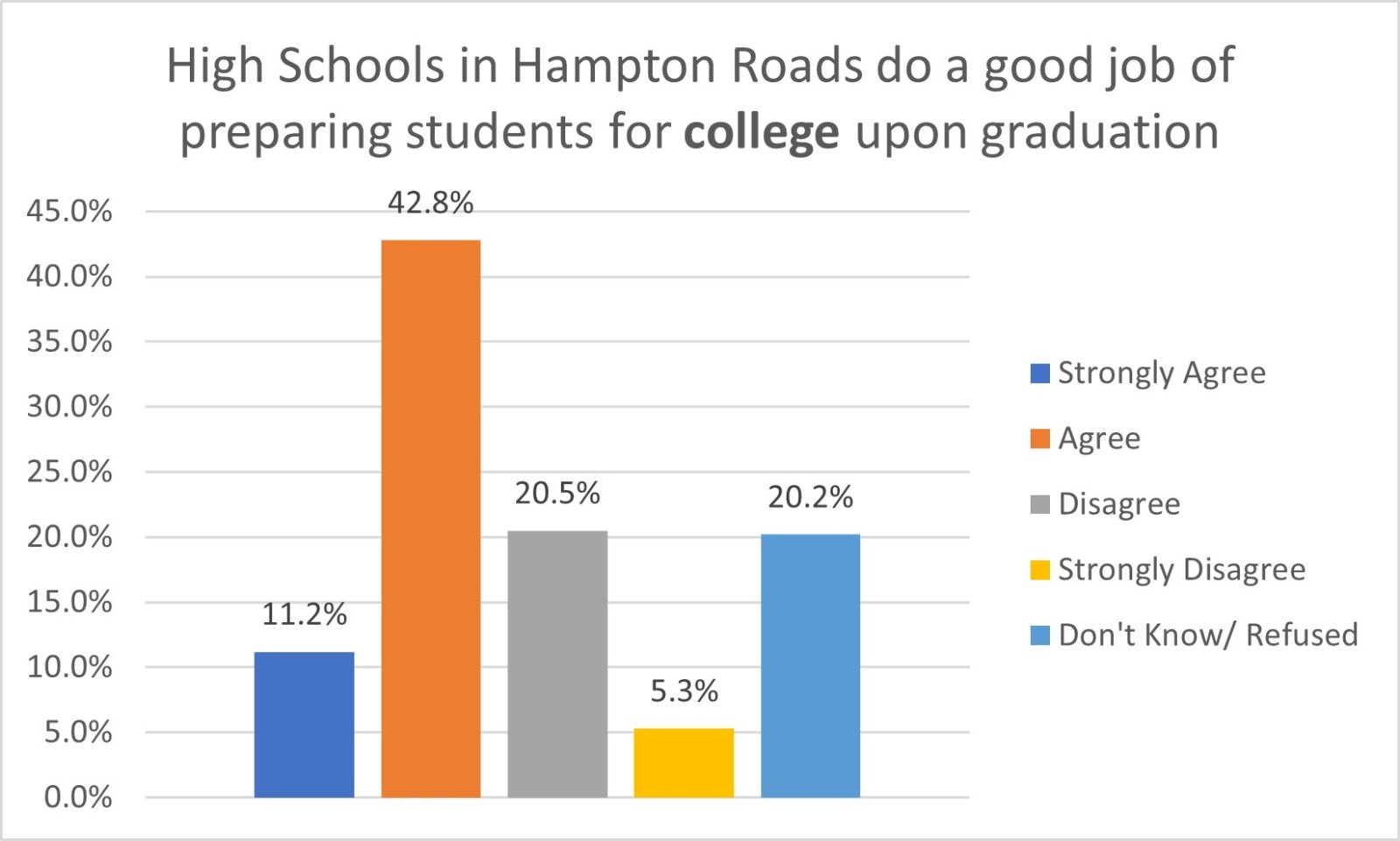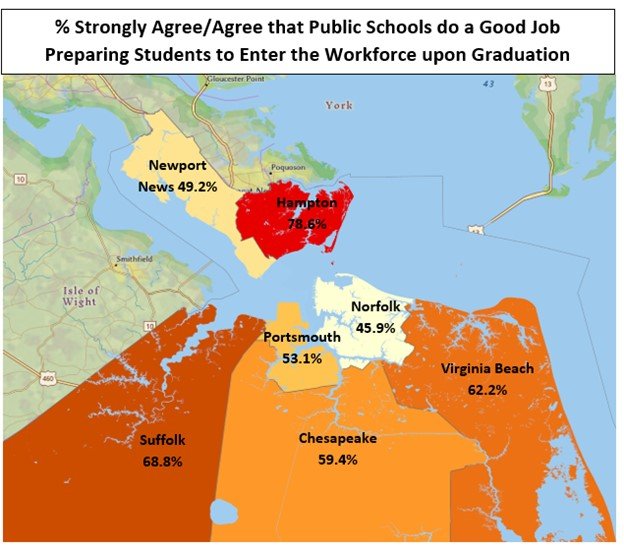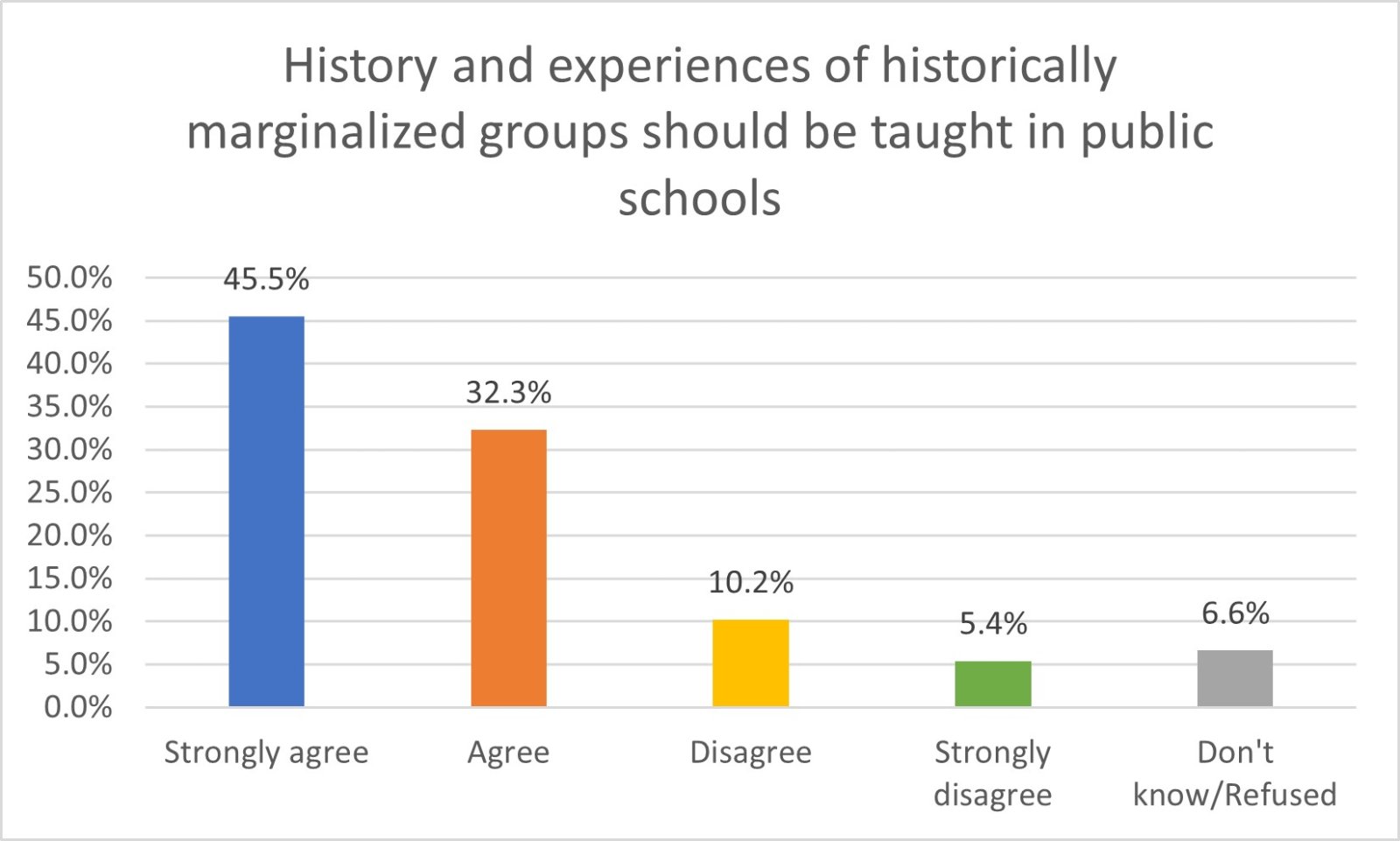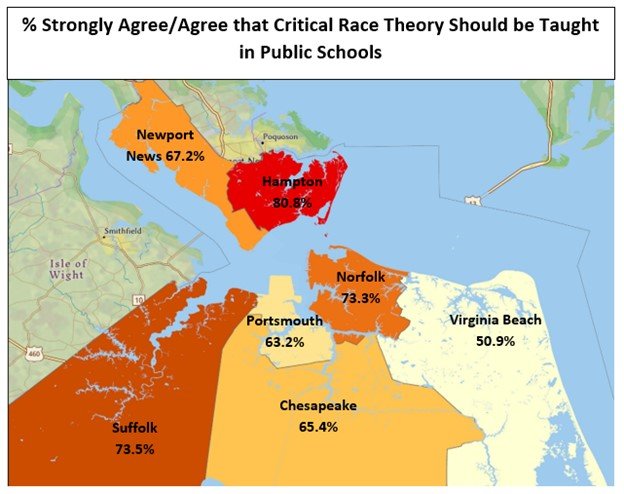More than three-quarters of respondents (76.4%) rated the quality of their own health as excellent (24%) or good (52.4%). This is slightly lower than last year (81.7%), while the percentage of those rating their health as fair (20.1%) is slightly higher than last year (14.7%). Only 3.4% of respondents rated their health as poor.
Respondents were also asked to rate the quality of medical and health care in Hampton Roads. Just under two-thirds (63.5%) rated the quality as excellent (21.4%) or good (42.1%). This is much lower than last year, when 73.6% of respondents rated the quality of care as excellent or good.
Another societal concern involves the impact of climate change on the Earth and on individuals. We asked residents of Hampton Roads how concerned they were about the impact of climate change on their personal health. About 61% reported that they were either somewhat (33.3%) or very concerned (27.9%). This is higher than the 57.9% of respondents who reported being concerned about climate impacts on their health last year. Just over 38% indicated they are not very concerned or not at all concerned (38.6%).
The majority of respondents did not have very young children, with only 14.4% indicating that they had children 5 or younger and 27% of respondents had school-aged children. Of those respondents who had school-aged children, the vast majority (81.8%) attend public school while 19.4% attend private school and 6.1% have children who are home-schooled. Regardless of if respondents had school-aged children or if they had children in public schools, all were asked to rate the quality of their local public school system and there was considerable variation in the responses. About 12% reported that their public school system was excellent and another third (32.3%) reported their school system was good. Still, 24.4% rated their local public school as fair and another 15.9% rated it as poor.
Below, respondents with children in public schools (n=135) are compared with respondents without children in the local public schools. There are a couple of items of note. First, parents with children in public schools were less likely to report that they did not know about the quality of the public schools. Second, they tended to view them more favorably than those without children in the public schools. Parents with children in the public schools were more likely to describe them as excellent (19.6% compared to 10%) or to describe the schools as good (38.5% compared to 30.5%). Respondents without children in the local public schools were more likely to rate them as poor (16.7% compared to 13.2%).
The perceptions of school quality also varied by city with residents in Virginia Beach rating the school the highest (68.8% good or excellent), followed by Chesapeake and Suffolk (59.4% each good or excellent). Newport News (24.1%) and Portsmouth (27.3%) had the lowest percentage of residents rating the schools at good or excellent.
Respondents were asked if they strongly agree, agree, disagree or strongly disagree with the following statements regarding the local schools:
- High schools in Hampton Roads do a good job of preparing students to enter the workforce upon graduation
- High schools in Hampton Roads do a good job of preparing students for college upon graduation
Respondents were slightly more likely to agree or strongly agree that Hampton Roads’ high schools do a good job of preparing students for college (54%) compared to preparing them to enter the workforce (46.9%). About 20% of respondents responded, “don’t know” (18%) or “refused” (2%) to each item.
Perceptions of how well the schools prepare students for the workforce also varied quite a bit by city. More than three-quarters (78.6%) of respondents in Hampton agreed that the public schools do a good job preparing students to enter the workforce followed by Suffolk (68.8%), Virginia Beach (62.2%) and Chesapeake (59.4%). Less than half of respondents from Norfolk (45.9%) and Newport News (49.2%) agreed that the public schools do a good job of preparing students for the workforce.
Finally, respondents were asked to what extent they agreed that certain topics should be taught in the public schools including:
- The history and experiences of historically marginalized groups (for example, African Americans, Hispanics, women, LGBTQ and others) in the United States, and
- Critical Race Theory
More than three-quarters of respondents (77.8%) agreed or strongly agreed that the history of marginalized groups should be taught in public schools compared to 54.5% who agreed with teaching critical race theory. A definition of critical race theory was not provided thus leaving respondents to answer based on their understanding of the term.
Respondents across Hampton Roads varied in their support for Critical Race Theory (CRT) being taught by schools with 80.8% of those from Hampton agreeing that CRT should be taught in schools compared to only about half of respondents from Virginia Beach (50.9%).



